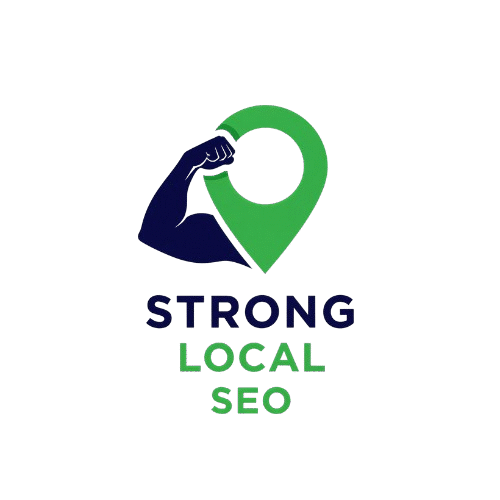If you’ve ever worked on boosting traffic to your website, chances are you’ve encountered the terms SEO and SEM. While they might seem like just more marketing buzzwords, knowing the difference between them is crucial if you want to expand your online presence effectively – and without blowing your budget.
What’s the actual difference between SEO and SEM? And more importantly, which one is right for you? Let’s clear things up in simple terms – no confusing jargon, just straightforward insights to help you make the best choice for your website.
First Things First: What is SEO?
SEO, short for Search Engine Optimization, is the practice of improving your website so it ranks higher on search engine results pages (SERPs) – without paying for ads. It’s all about making your site more appealing to Google and other search engines, so they display it prominently when users search for topics relevant to your business.
Think of SEO like setting up a stunning shop on a busy street where foot traffic comes naturally – no need for paid ads to attract visitors. That’s the power of organic visibility through SEO.
The Key Components of SEO:
- Keyword Optimization: Identifying and using the right words people search for.
- Quality Content: Creating valuable, helpful content that answers user queries.
- On-Page SEO: Optimizing elements like meta tags, URLs, images, and headings.
- Technical SEO: Ensuring your site is fast, mobile-friendly, and easy to navigate.
- Backlinks: Getting other reputable sites to link back to you.
Pros of SEO:
- Long-term, sustainable traffic
- Builds credibility and trust
- Cost-effective over time (no per-click charges)
- Higher click-through rates compared to ads
Cons of SEO:
- Takes time (often months) to see significant results
- Requires consistent effort and content updates
- Can be highly competitive in some industries
What About SEM?
SEM, or Search Engine Marketing, is essentially the paid counterpart to SEO. It involves running ads, usually via platforms like Google Ads, to secure a prime spot at the top of search results – and it can get you visibility almost immediately.
It’s like renting a billboard on that busy street – you’re highly visible as long as you keep paying. But the moment you stop, your visibility disappears just as quickly.
Components of SEM:
- PPC (Pay-Per-Click) Ads: You pay every time someone clicks on your ad.
- Ad Copy & Landing Pages: Crafting compelling ads and directing users to optimized landing pages.
- Targeting: You can precisely target demographics, locations, devices, and even the time of day.
Pros of SEM:
- Immediate visibility
- Laser-targeted audience reach
- Great for time-sensitive campaigns, like sales or product launches
- Measurable ROI with detailed analytics
Cons of SEM:
- Can get expensive quickly, especially in competitive markets
- Traffic stops the moment you pause the ad budget
- Requires continuous monitoring and tweaking for effectiveness
Which One Should You Use?
Here’s the big question: should you invest in SEO or SEM? The right choice really comes down to your specific goals, how quickly you want results, and how much you’re willing to spend.
Use SEO if:
- You want sustainable, long-term traffic.
- You’re building a brand or content-heavy site.
- You have time to invest and can wait a few months for growth.
- Budget constraints prevent high ad spend.
SEO is ideal for blogs, service-oriented businesses, educational sites, and anyone looking to establish long-term credibility and authority within their industry or niche.
Use SEM if:
- You need immediate traffic (like launching a new product).
- You’re running a time-sensitive promotion or event.
- Your industry is highly competitive, and organic SEO alone won’t cut it.
- You have a healthy marketing budget to test and optimize ads.
SEM works well for e-commerce stores, startups seeking immediate visibility, and businesses looking to quickly test new products or enter unfamiliar markets.
Can You Use Both?
Absolutely – and many thriving brands do just that. By combining SEO and SEM, you can achieve quick results through paid ads while steadily building long-term organic growth.
For example:
- Leverage SEM to generate quick traffic for a product launch, all while your SEO strategy works in the background to establish lasting visibility and growth.
- Use SEM retargeting ads to reach visitors who discovered your site through organic SEO but left without taking action. This keeps your brand top of mind and encourages them to return and convert.
- Track which keywords are driving results in your SEM campaigns, and then focus your SEO content strategy around those high-performing terms to boost your organic reach.
By using both SEO and SEM together, you maximize your presence on search results. Whether someone clicks on a paid ad or an organic link, either way, they’ll end up on your website – boosting your chances of engagement and conversions.
Final Thoughts
At the end of the day, SEO and SEM aren’t rivals – they’re partners working toward the same goal. The trick is understanding when to rely more on one than the other, based on your current business needs and growth stage.
If your goal is long-term growth and building a reputation as an industry leader, SEO is the way to go. But if you’re after immediate traffic, rapid testing, and swift conversions, SEM is the tool you’ll want to lean on.
And if you’re aiming high? Combine both strategies. In the world of search, the more visible you are, the more clicks you’ll attract – and that means more customers and faster growth.

